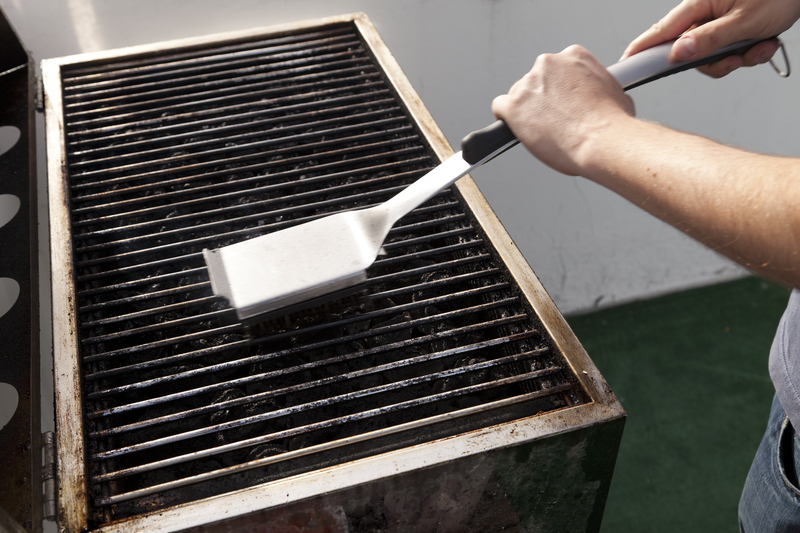Grease Stain Cleanup: Step-by-Step Guide
Posted on 08/11/2024
Grease stains can be notoriously difficult to remove, whether they're on clothes, upholstery, or kitchen surfaces. They are stubborn and tend to spread if not handled properly. However, with the right approach and materials, you can effectively eliminate them. This guide will walk you through the necessary steps to tackle grease stains on various surfaces, ensuring you restore your items to their pristine condition.
Materials Needed
Before diving into the grease stain cleanup process, gather the necessary materials. Here's a list of items that will come in handy:
- Paper towels or clean cloths
- Baking soda
- Cornstarch or talcum powder
- Liquid dish soap
- White vinegar
- Ammonia
- Soft-bristle brush or toothbrush
- Detergent
- A bucket or basin
- Cold water

Step-by-Step Guide
Step 1: Act Quickly
Grease stains are easier to remove when they are fresh. As soon as you notice a grease stain, act immediately. Blot the excess grease with a paper towel or a clean cloth. Do not rub the stain, as this could cause it to spread and penetrate deeper into the fabric or surface.
Step 2: Pre-Treatment with Absorbents
To minimize the grease stain, use an absorbent like baking soda, cornstarch, or talcum powder. Sprinkle a generous amount on the stain and let it sit for 15 to 30 minutes. These materials will help lift the grease from the surface. Afterward, gently brush away the powder with a soft-bristle brush or a toothbrush.
Cleaning Procedures for Different Surfaces
Clothing
1. Apply Liquid Dish Soap: Dab a small amount of liquid dish soap directly onto the stain. Gently work it in with your fingers or a soft brush. Dish soap is formulated to cut through grease, making it an effective pre-treatment.
2. Soak in Cold Water: Fill a bucket or basin with cold water and add a few drops of liquid dish soap. Submerge the stained garment and let it soak for about 30 minutes.
3. Rinse and Wash: After soaking, gently rub the stained area to loosen remaining grease. Rinse thoroughly with cold water. If the stain persists, repeat the process before laundering the garment as per its care instructions.
Upholstery and Carpets
1. Blot the Excess Grease: Use a paper towel or a clean cloth to blot any excess grease. Be careful not to rub, as this can push the stain deeper into the fabric.
2. Use Baking Soda or Cornstarch: Sprinkle baking soda or cornstarch on the stain and let it sit for 15 to 30 minutes to absorb the grease. Then, vacuum the powder away.
3. Mix a Cleaning Solution: In a bowl, mix one tablespoon of liquid dish soap, one tablespoon of white vinegar, and two cups of warm water. Dip a clean cloth into the solution and gently blot the stained area.
4. Rinse and Dry: After cleaning, use another cloth dampened with water to rinse away the soapy residue. Blot the area with a dry cloth and let it air dry.
Kitchen Surfaces
1. Remove Excess Grease: Wipe away any excess grease with a paper towel or cloth.
2. Apply Baking Soda Paste: Make a paste using baking soda and water. Apply the paste to the grease stain and let it sit for 15 minutes.
3. Scrub with a Sponge: Use a sponge or a soft-bristle brush to gently scrub the stained area. Rinse with water and wipe dry with a clean cloth.
4. Use Ammonia for Stubborn Stains: For particularly stubborn stains, mix one part ammonia with two parts water. Apply the solution to the stain, let it sit for a few minutes, then scrub and rinse as before. Ensure the area is well-ventilated when using ammonia.

Cleaning Tips and Precautions
1. Test Before Applying: Always test any cleaning solution on a small, inconspicuous area first to ensure it doesn't cause damage or discoloration.
2. Avoid Heat: Never use hot water or a clothes dryer on a grease stain, as heat can set the stain, making it much harder to remove.
3. Check Care Labels: For clothing and upholstery, always check the care labels before applying any cleaning solutions.
4. Regular Maintenance: Regular cleaning and prompt attention to spills can help prevent grease buildup and make stain removal easier.
Conclusion
Grease stains are a common household issue, but they don't have to be a permanent problem. By acting quickly and using the right materials and techniques, you can effectively tackle these stubborn stains on clothing, upholstery, and kitchen surfaces. This comprehensive guide offers a clear, step-by-step approach to grease stain removal, ensuring you achieve the best possible results. Remember, persistence is key, and sometimes multiple treatments may be necessary to completely remove a grease stain. Happy cleaning!






